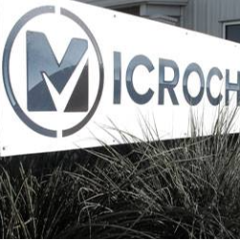Ensuring Safety and Compliance: The Importance of Medical Device Testing and Cleaning Validation

Introduction to Medical Device Testing Services
Medical devices play a vital role in modern healthcare, from simple instruments to complex life-supporting systems. To ensure these products perform safely and effectively, manufacturers rely on rigorous medical device testing services. These services encompass a broad spectrum of evaluations designed to verify the device’s performance, durability, and microbiological safety before it reaches patients. Whether you are developing a new surgical tool or refining a reusable diagnostic device, comprehensive testing helps reduce risks, meet regulatory expectations, and deliver trusted products to market.
Why Medical Device Testing Services Matter
Regulatory bodies such as the FDA, ISO, and international agencies require detailed evidence to prove that a device is safe and effective under real-world conditions. Medical device testing services include everything from biocompatibility assessments and mechanical integrity checks to microbiological studies such as bioburden and sterilization validations.
Microbiology testing is an essential component because it evaluates microbial load and determines if sterilization procedures are effective. Through methods like ISO 11737 bioburden counts and sterilization validation protocols, laboratories ensure each device meets strict sterility assurance levels. These reliable data points become a cornerstone in regulatory filings, helping manufacturers bring their innovations to market more efficiently and responsibly.
Diving Into Medical Device Cleaning Validation
For reusable medical devices, cleaning is a critical first step before sterilization. Any remaining soilssuch as blood, tissue, protein, or cleaning chemicalscould interfere with sterilization effectiveness or even harm patients. This is where medical device cleaning validation becomes essential. Cleaning validation studies simulate real-world conditions to show that a device can be effectively cleaned using recommended procedures.
Laboratories conduct these tests by applying artificial test soils to devices, processing them through established manual or automated washer cycles, and then measuring the level of residual contamination. Proteins, hemoglobin, carbohydrates, and microbial counts are analyzed using sensitive analytical methods to confirm whether the cleaning process consistently removes contaminants to acceptable levels.
Components of a Successful Cleaning Validation Program
A strong medical device cleaning validation strategy includes detailed protocols, realistic test soils, and validated detection methods. The process typically involves:
- Soiling the device with clinically relevant materials
- Cleaning per manufacturer instructions using washers, detergents, or manual scrubbing
- Residual analysis to measure protein, organic material, and microbial contamination
- Repeatability studies to demonstrate consistency over multiple cleaning cycles
- Documentation to support FDA or ISO audit requirements
By generating clear proof that each cleaning step works under worst-case scenarios, manufacturers can confidently show that reprocessing instructions are valid, repeatable, and patient-safe.
Integrating Testing and Cleaning Validation for Compliance Success
To meet increasing regulatory demands, manufacturers should integrate medical device testing services with medical device cleaning validation early in the product development lifecycle. Doing so can highlight design features that complicate cleaning, prompt changes that improve reprocess ability, and ultimately make regulatory submissions smoother. Testing laboratories play a key role by offering both standardized and customized testing, helping companies comply with FDA guidelines, ISO 13485 quality systems, and global market requirements.
Advancing Patient Safety Through Science-Based Validation
In today’s healthcare environment, patient safety and product quality are non-negotiable. Robust medical device testing services confirm that products are safe and effective, while thorough medical device cleaning validation ensures that reusable devices can be cleaned and sterilized without risk. By investing in both testing disciplines, manufacturers not only achieve regulatory compliance but also build trust with hospitals, clinicians, and patients who rely on their devices every day.
- AI
- Vitamins
- Health
- Admin/office jobs
- News
- Art
- Causes
- Crafts
- Dance
- Drinks
- Film
- Fitness
- Food
- Jocuri
- Gardening
- Health
- Home
- Literature
- Music
- Networking
- Alte
- Party
- Religion
- Shopping
- Sports
- Theater
- Wellness


